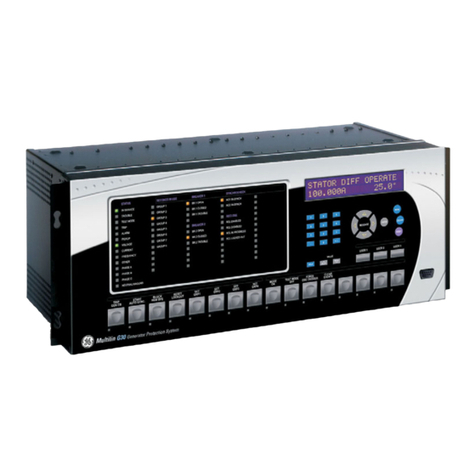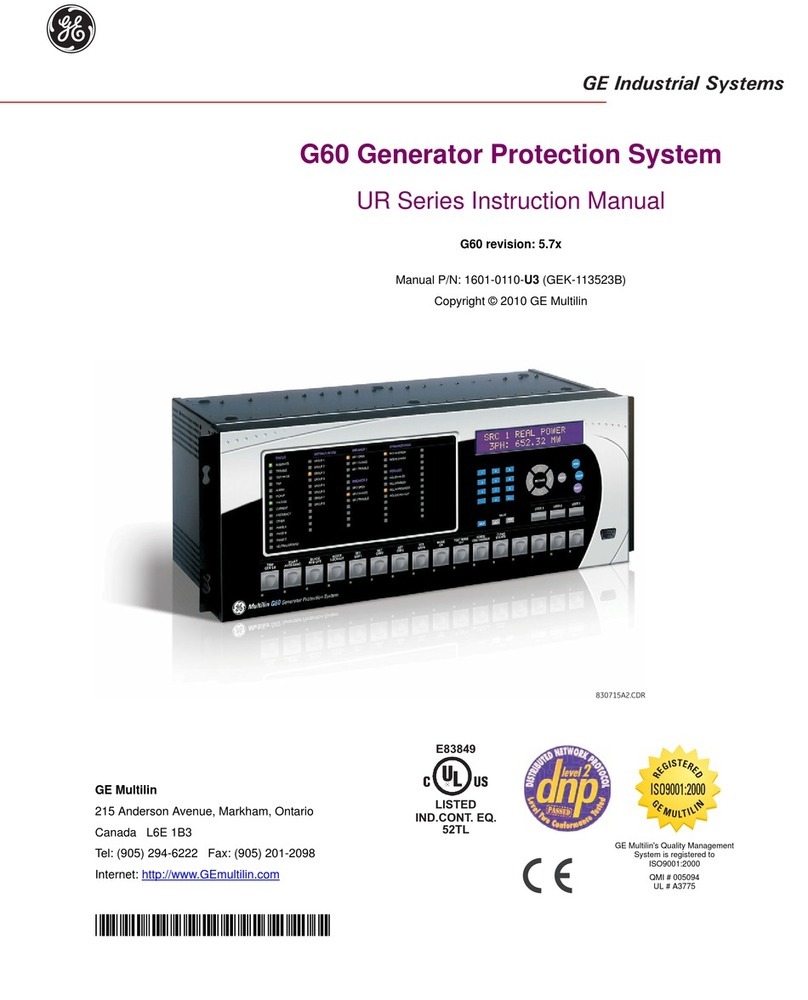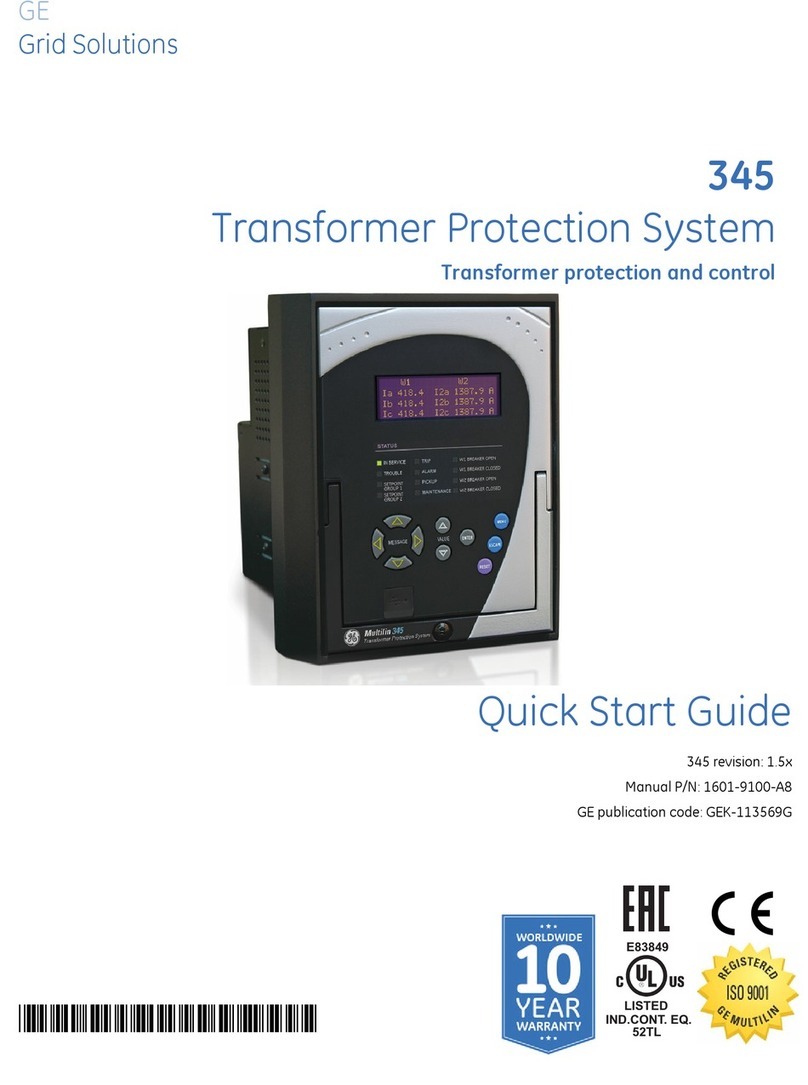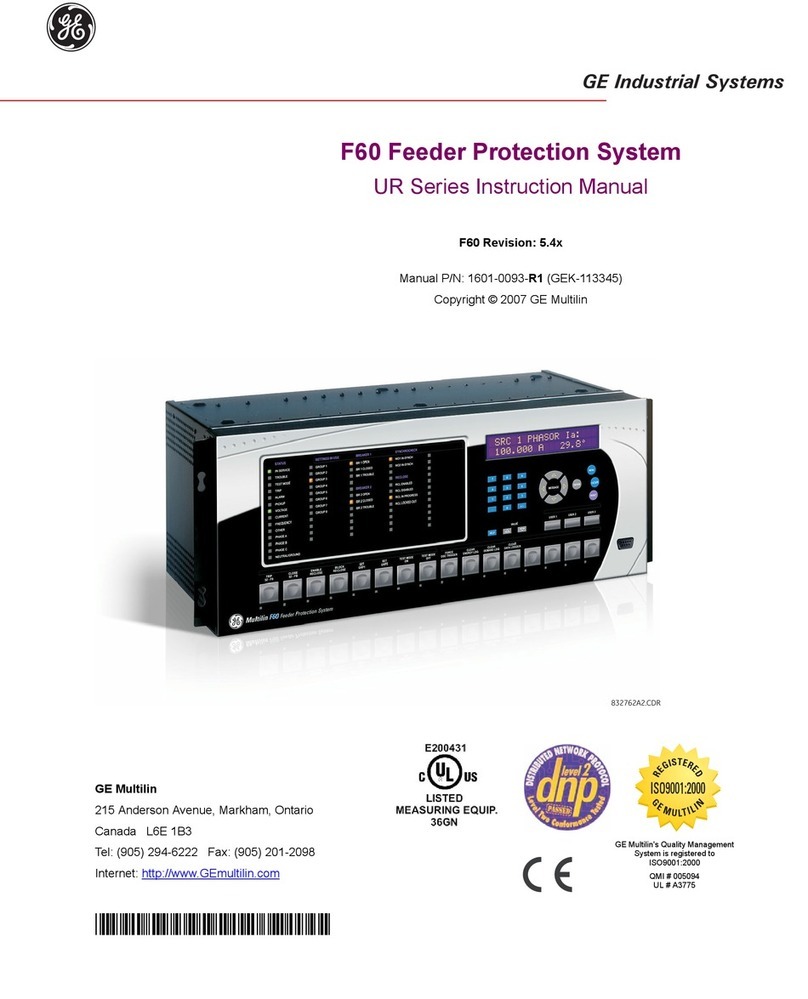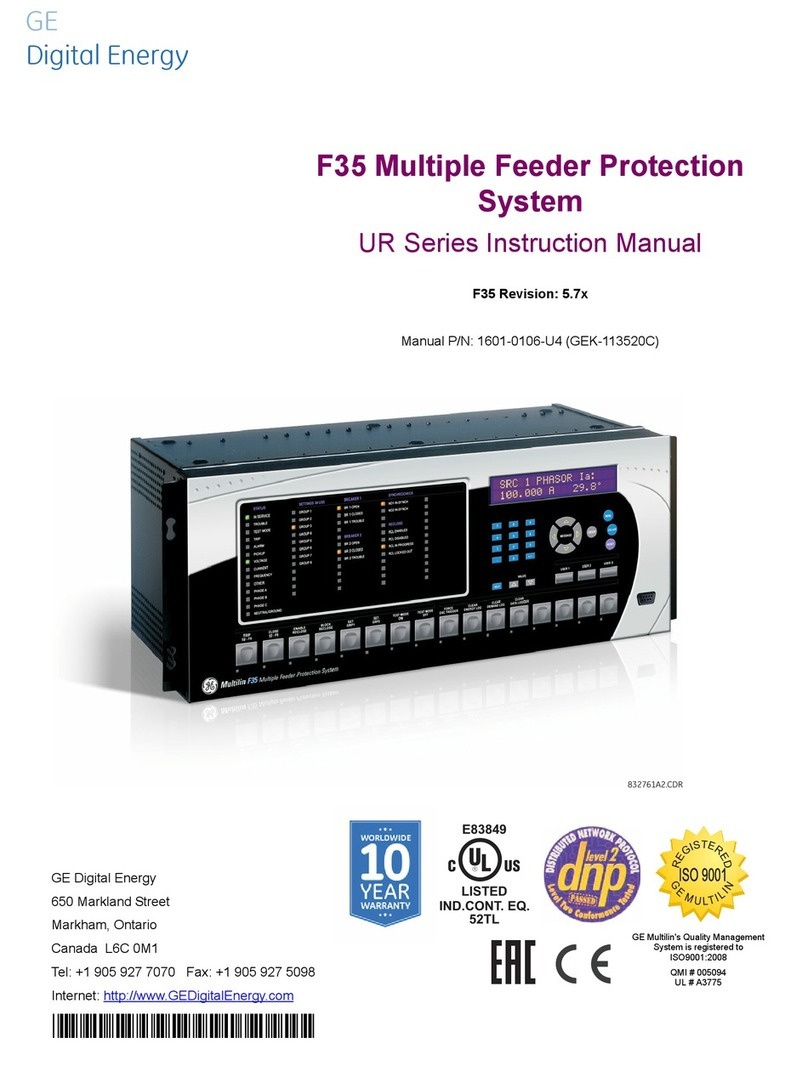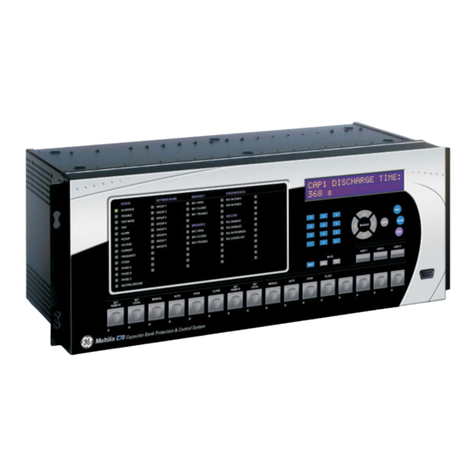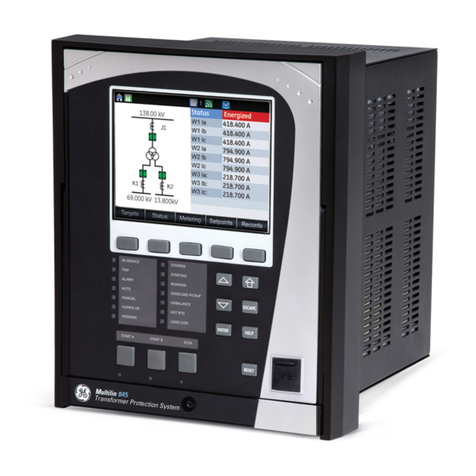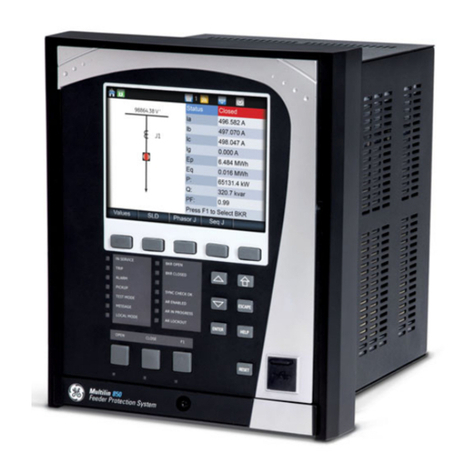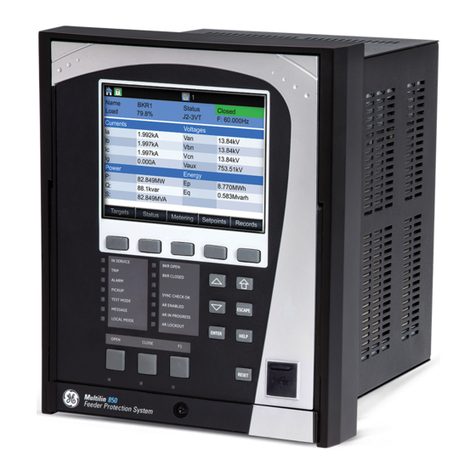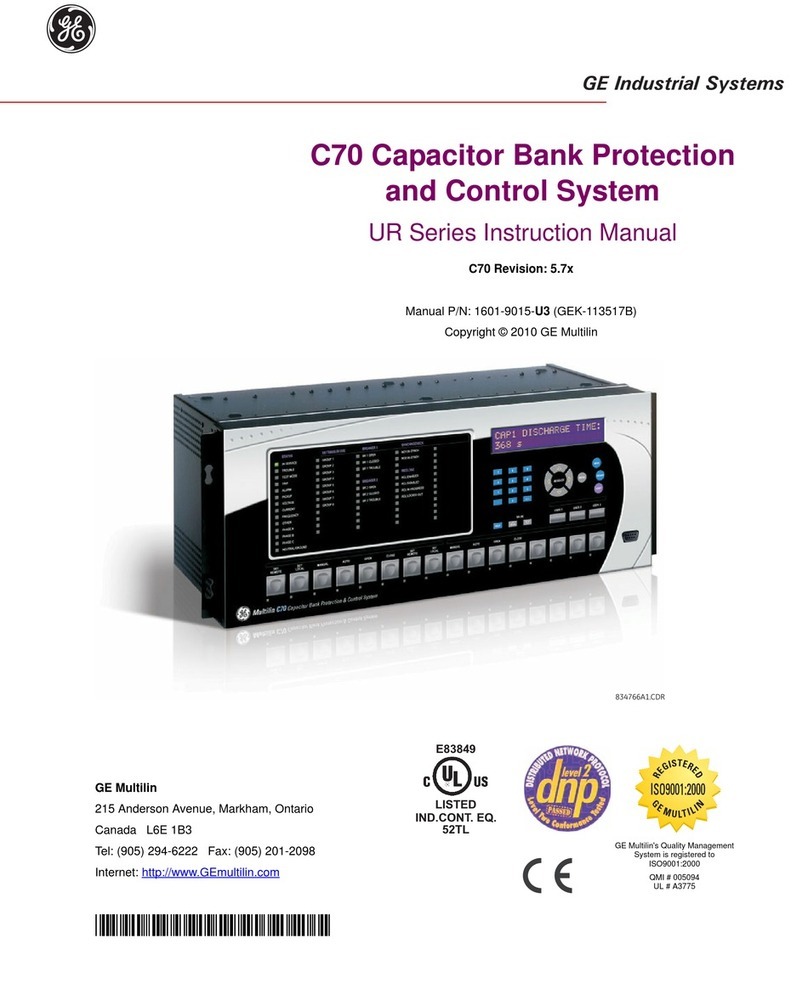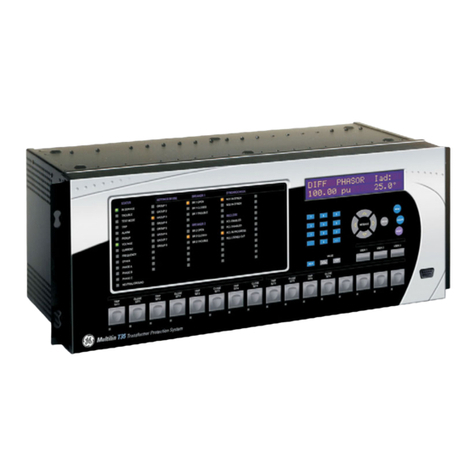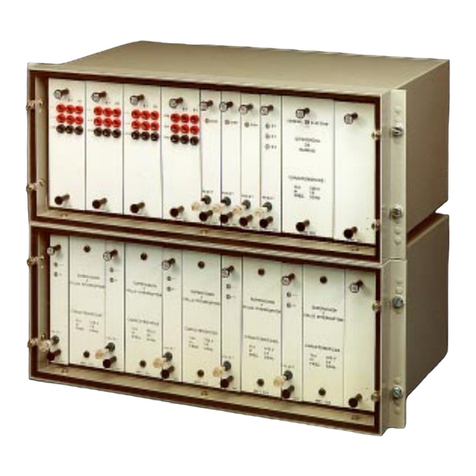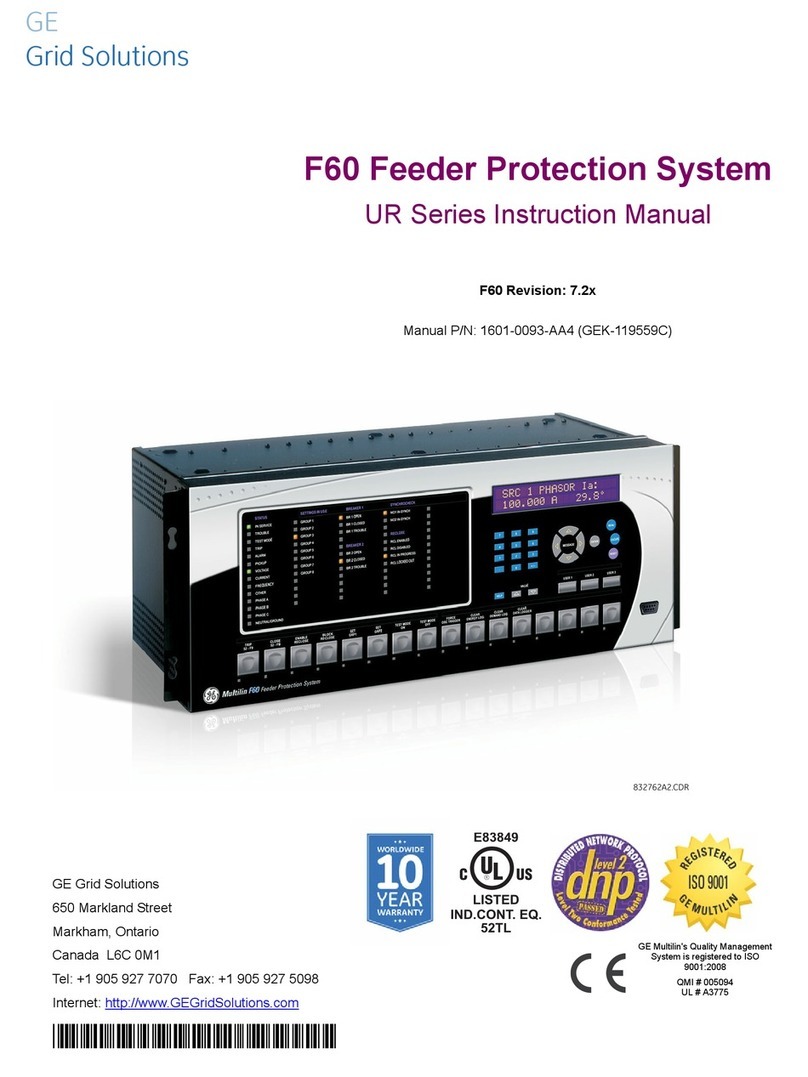
GEK-98846A
1
TABLE OF CONTENTS
1. DESCRIPTION......................................................................................................... 3
2. APPLICATION ......................................................................................................... 6
3. CHARACTERISTICS................................................................................................ 7
3.1 GENERAL CHARACTERISTICS............................................................................7
3.2. TECHNICAL SPECIFICATIONS............................................................................ 8
3.3 SETTINGS RANGES AND VALUES.................................................................... 11
3.4 INTERRELATIONS BETWEEN SETTINGS......................................................... 18
4. PRINCIPLES OF OPERATION.............................................................................. 19
4.1 INPUTS................................................................................................................ 19
4.2 CURRENT AND VOLTAGE MEASURING ........................................................... 20
4.3 DISTANCE MEASURING UNITS (DMU).............................................................. 21
4.4 PROTECTION SCHEMES.................................................................................... 23
4.5 LINE PICK UP UNIT (LPU)................................................................................... 25
4.6 REMOTE OPEN DETECTOR UNIT (ROD) (MLP3000)........................................ 26
4.7. DISTURBANCE DETECTION UNIT (DD) (MLP3000) ......................................... 26
4.8 FUSE FAILURE UNIT (FF) (MLP3000)................................................................. 27
4.9 RECLOSER (MLP2000 AND MLP3000) ................................................................ 27
4. 10. DIRECTION INDICATOR ................................................................................. 30
4.11 MLP STATUS..................................................................................................... 30
4.12 EVENT REGISTER ............................................................................................ 32
4.13 OSCILLOGRAPHIC REGISTER......................................................................... 33
4.14 FAULT LOCATOR (MLP3000). .......................................................................... 35
4.15 CURRENTS OR VOLTAGE LOG....................................................................... 35
4.16 BREAKER SUPERVISION. ................................................................................ 36
4.17 SELF CHECKS AND ERROR ROUTINES. ........................................................ 37
4.18 OUTPUTS .......................................................................................................... 40
4.19 OPERATIONS.................................................................................................... 42
4.20. OUT OF STEP BLOCKING UNIT...................................................................... 42
5 COMMUNICATIONS............................................................................................... 43
5.1 REMOTE COMMUNICATIONS............................................................................ 43
5.2 SELF CHECKS AND ERROR ROUTINES ........................................................... 43
5.3 RELAY DATA....................................................................................................... 45
5.3.1 EVENT REGISTER........................................................................................ 45
5.3 2 CURRENTS AND VOLTAGE LOGS............................................................... 46
5.3.3 MLP STATUS................................................................................................. 46
5.4 LOCAL COMMUNICATIONS................................................................................ 46
5.4.1 KEYBOARD AND DISPLAY........................................................................... 46
5.4.2 INFORMATION GROUP ................................................................................ 49
5.4.3 EVENT LOGS ................................................................................................ 50
5.4.4 CURRENT OR VOLTAGE LOGS................................................................... 51
5.4.5. STATUS........................................................................................................ 52
5.4.6 OPERATIONS GROUP.................................................................................. 53
5.4.7 VIEW SETTINGS ........................................................................................... 54
5.4.8 MODIFY SETTINGS....................................................................................... 55
5.4.9 SETTINGS NOT ACCESSIBLE FROM THE KEYBOARD.............................. 57








